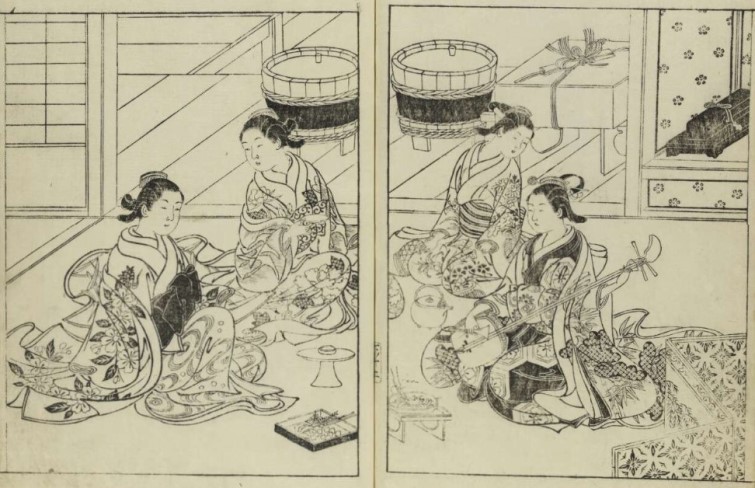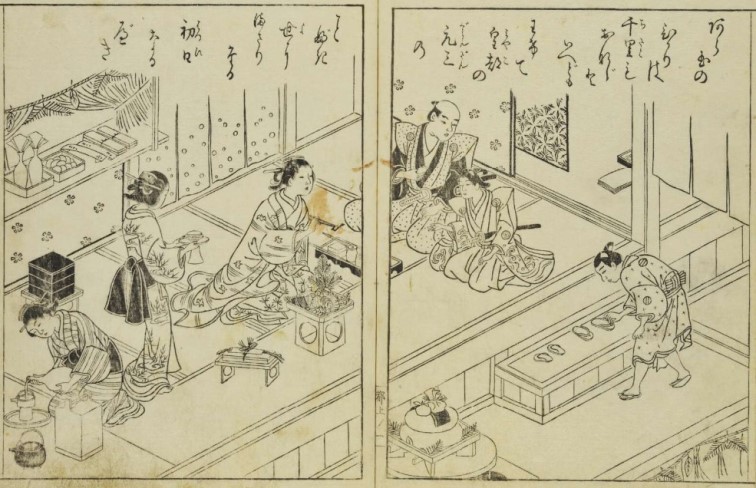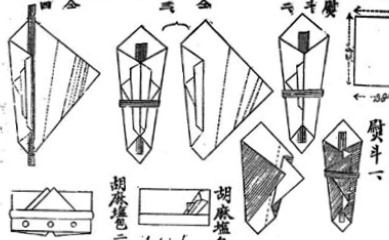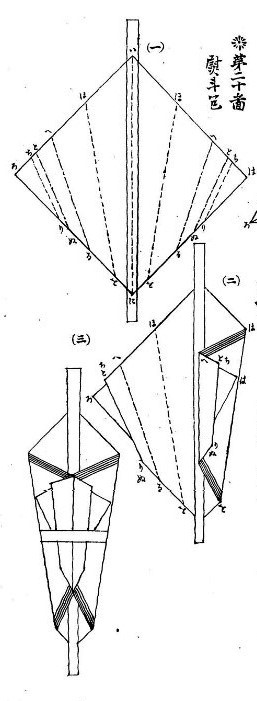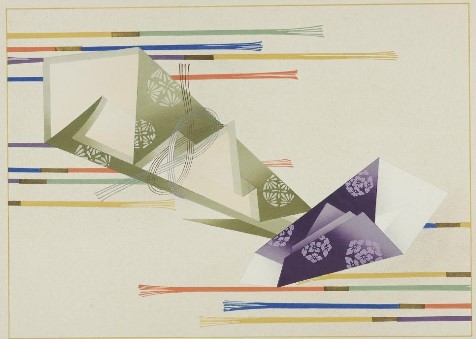| The Public Paperfolding History Project
x |
|||||||
| Noshi | |||||||
| This
page attempts to record what is known about the history
of Noshi. Please contact me if you know any of this
information is incorrect or if you have any other
information that should be added. Thank you. 'Noshi' are folded paper decorations which are used to decorate boxes, envelopes or other packaging in which items (particularly gifts) are contained or wrapped. There appear to be a variety of designs. 'Ocho and mecho' (decorative stylised male and female butterflies) are a form of Noshi which are attached to sake bottles and kettles as part of traditional Japanese wedding ceremonies. There is a separate page about the history of these designs here. Another common form of Noshi was originally an Open Wrapper for dried abalone (in strip form), although in modern times the dried abalone strips are usually represented by strips of paper. Some later designs for Closed Wrappers include a Noshi as an integral part of the design. More information about the early appearance of Noshi can be found on the Tsutsumi - General page. ********** 1731 This print from Volume 3 of 'Ehon Tokiwagusa' (Picture Book of the Evergreens), which was published in 1731, shows a Noshi attached to a box (in the upper part of the right hand panel).
********** 1746 This print by Nishikawa Sukenobu, from 'Ehon Miyako Zoshi' (Picturebook of Life in the Capital), which was published in 1746, shows a Noshi attached to a small package (in the foreground of the left panel).
********** 1860 to 1879 These three small noshi, in which the dried abalone strips are printed as part of the internal image, can be dated to c1860 to 1879. They are folded from 2 x 1 rectangles, which are first doubled. so that there is an image on the front and back of the resulting square, then folded into the noshi form. They open up to reveal graphic erotic images in the shunga style. For full details see https://research.britishmuseum.org/research/collection_online/collection_object_details.aspx?objectId=778494&partId=1&searchText=noshi-gami&page=1
********** 1905 Diagrams for a Noshi appear in 'Shukouka Kyohon : Liron Jishuu Souga Setsumei' by Kikujiro Kiuchi, Rokushiro Uehara and Hideyoshi Okayama, which was published by Shigebei Takase in Chiba in 1905.
********** 1907 Diagrams appear in 'Shukou Tebikigusa : Kokumin Kyoiku Origami Yuihimo' by Ishin Nishigaki, which was published by Meguro Shoten in Nagaoka in 1907.
********** 1935 'Origami Moyo, Book Two' by Kawarazaki Kodo, which was published in Japan in 1935, contains a print titled 'Noshi'.
********** 1964 Isao Honda's book 'Noshi - Classic Origami in Japan', which was published by the Japan Publications Trading Company in 1964 gives several examples of folding methods for noshi, or noshita awabi, which are wrappers for dried abalone, as well as other, non-traditional folds for wrappers and containers. ********** Today In contemporary Japanese culture noshi are attached to gifts as a symbol of good wishes, although, since they are usually commercially produced, the dried abalone is usually represented just by a strip of paper. Alternatively, representations of noshi may simply be printed directly onto the wrapping paper itself. ********** |
|||||||
